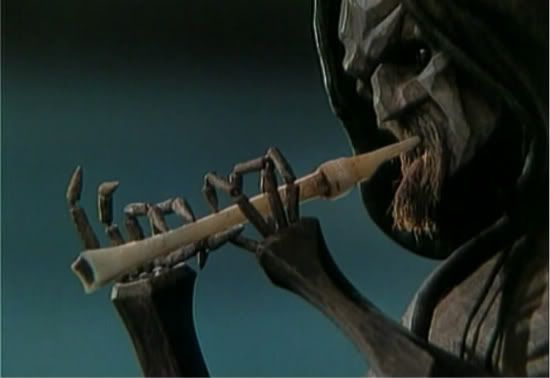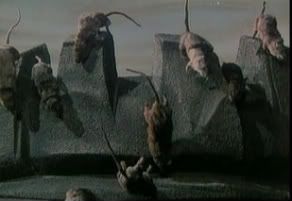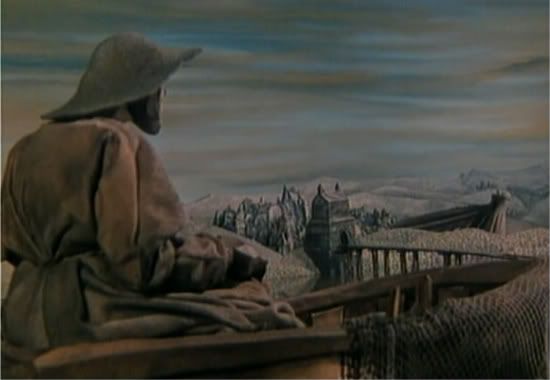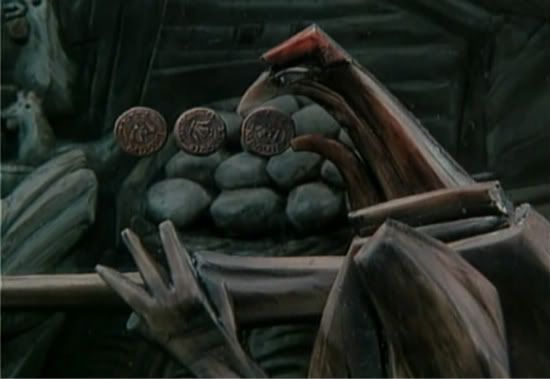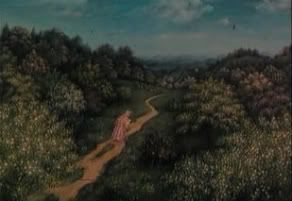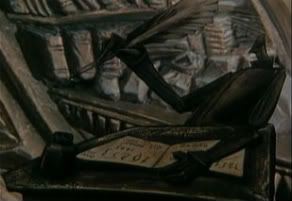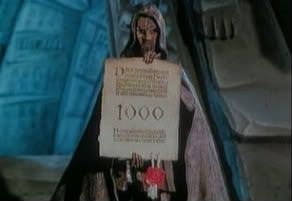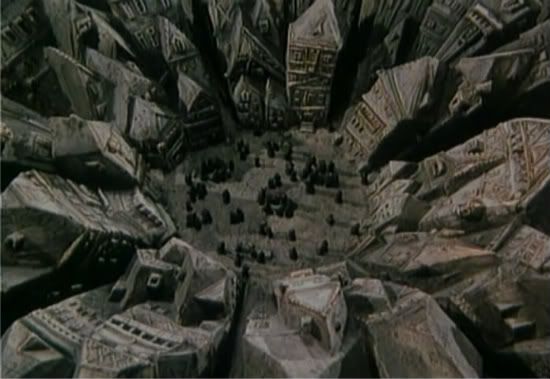|
Krysar
(1985) |
|
Synopsis Analysis The strange world Barta manifests to the viewer in Krysar is both dark and astonishing. Other than the rats which invade the town, the film is performed exclusively by puppets moved by means of stop motion animation. While these puppets are sometimes roughly carved, they are all well conceived and remarkably affecting. Many exude a peculiar cruelty, and most are, at least, vaguely sinister. Moreover, the town these beings inhabit is just as bewitching as are its denizens. Composed of various impossible, warped structures, not unlike the nightmarish village of Robert Wiene's The Cabinet of Dr. Caligari, it provides a consistently effective setting for the dire events the director depicts. In fact, not only are the props and sets used by Barta to create his eery world weirdly misshapen themselves, but they frequently distort perspective, thereby infusing the town with a dizzying sense of intoxication which greatly enhances its dreamlike unreality. Nothing in Hamelin has quite the feel of the universe in which we live our waking lives. Even the world beyond the town is different from our own. Barta has set Hamelin before grim painted backdrops which constantly remind the viewer that he is an observer of events which are occurring on a stage, not in some distant land. The effect the director achieves with these various devices is at once visually remarkable and surprisingly affecting. Despite its generally grim feel, the movie is not, however, entirely devoid of an appreciation of the world's lighter beauties. After Barta has wholly immersed the viewer in his dark and sinister universe, he provides him with one of the loveliest, most enchanting scenes I have encountered in any film. Having rid Hamelin of the rats, the piper's music transforms the barren landscape around the town into one adorned with lush foliage and vibrantly colored flowers. The director depicts this change by using time-lapse photography to film a painting that is being created on a piece of wood. He shows us green trees slowly spreading across the wood's grain, then flowers opening amidst the leaves, then birds appearing beside the flowers. The emergence of these images is truly lovely, as is the completed painting, which has a sedate, kindly charm. This moment of lightness is not, however, sustained, nor is it merely an interruption, but ultimately serves to emphasize the darker feelings which dominate the movie. Not only does Barta show real skill in his brief evocation of beauty, but he also demonstrates his ability to incorporate such a distinct element into his movie in such a way that it enhances the emotive impact of the whole instead of detracting from it. What is more, the peculiar, enchanted world crafted by the director is made even more magical by the script he uses, which lacks even a single word of understandable conversation. Instead of putting comprehensible dialogue in the mouths of his cruel characters, Barta has them mumble incoherently, spout gibberish, cluck like chickens, or bray like donkeys. Somehow, this approach, by both distancing the viewer from the characters and fascinating him with them, makes watching the film feel like observing a ritual performed in an unknown language. It gives an odd unreality to the events so that they are infused with a real and affecting sense of timelessness. By using such devices, Barta never allows the viewer to forget that he is engaged with characters existing within a work of art rather than with beings inhabiting our own world. He is able to transport the viewer into a strange, otherworldly realm in which emotions have been given visual and aural expression. The viewer is, consequently, able to participate with those emotions immediately and feel them in all their potency. Instead of attempting to fool us into becoming involved with persons portrayed as though they were individuals such as ourselves, Barta creates a land that exists independently of our own universe, one that so envelopes the viewer that he can forget about his own existence and submerge himself in his experience of watching the film. The director has truly created a powerful, evocative masterpiece. Jirí Barta's Krysar is a visually stunning, profoundly affecting work of art. It is precisely what a film should be. Review by Keith Allen
Home Page / Alphabetical List of
Films © 2005 movierapture@hotmail.com Keith Allen. All rights reserved. |

